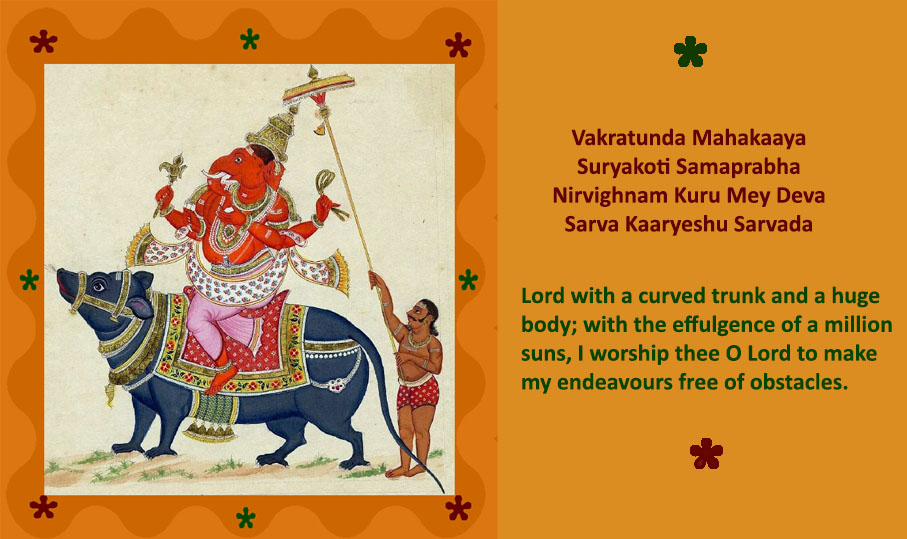Lord Ganesha. How interesting would be the symbolism behind his elephant head and human body! Read about the significance and symbolism of Ganesha. Learn to chant Vakratunda Mahakaya mantra and its meaning.

One day on her way back, after offering a White Lotus to the Ganesha under the Peepal tree, Sita ponders on his unusual form and the significance of Ganesha. She is a girl with a quizzical mind and her curiosity remains unabated until the answers that are sought are convincing. Grandma is a perennial source of wisdom and has answers to almost all the queries of Sita. On reaching home she questions, “Grandma why does Ganesha have an elephant head and a human body?” Grandma feels delighted by her curiosity to know about higher truths apart from listening to stories at a very young age. She begins to relate the symbolism of Ganesha.

We all know that the elephant is the largest animal. It is also an intelligent and a graceful creature. Of the significance of Ganesha, his elephant head is of prime importance. Ganesha’s elephant head symbolises the might and the wisdom of the Lord. Ganesha is graceful and compassionate; however, he shows no mercy to the evil minded just like the elephant, which can cause great harm when provoked. The huge fan like ears symbolise agility in responding to the prayers of his devotees
Ganesha’s trunk is suggestive of discrimination between right and wrong. He thus teaches us to understand the two and to choose the right at all times in life. It further suggests flexibility in life to attain success. Furthermore, the elephant stretches its trunk to caress its young ones. Ganesha also extends his trunk with compassion to those in distress.


Have you ever thought as to why Ganesha has a pot belly? The symbolism of Ganesha’s pot belly is that it stands for the truth that the vast universe is comprised in the Lord, the source of all beings. It is indicative of digesting (accepting) the good and bad in life that we encounter for a balanced living.
Ganesha’s broken tusk relates his sacrificing nature. When Sage Vyasa sought the aid of Ganesha to write the Mahabharata, Ganesha readily broke one of his tusks to pen the scripture as Vyasa dictated. Hence, Ganesha teaches us the importance of sacrifice for the good of all.


The Modak in Ganesha’s lower left hand represents the bliss that a devotee begets in his spiritual pursuits. The Abhaya Mudra of the lower right hand promises protection and blessings.
In the upper arms he holds an axe to cut off attachments that hinder spiritual progress and a rope to pull a person on to the path of devotion and spirituality.


The mouse at the feet of Ganesha is variously represented as human ego, desire, the darkness of ignorance etc. One will have to override these negative tendencies with divinity. Ganesha stands as the epitome of divinity.
So the next time we pray to Ganesha, let us remember the underlying significance and symbolism of this Hindu God.